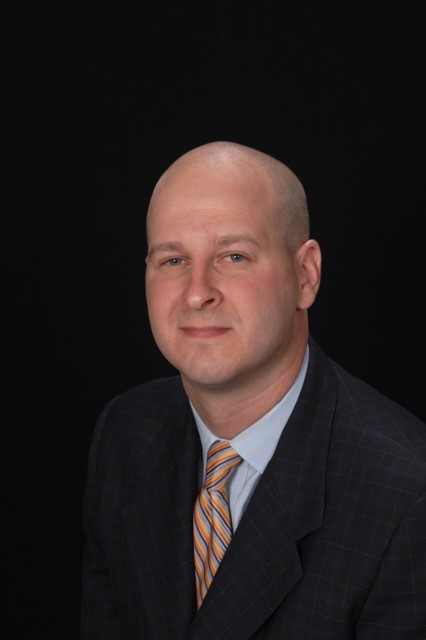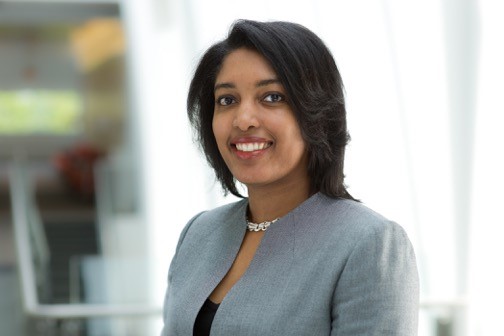The past year saw the defined contribution market searchingfor the forest through the trees, says Drew Way.
|A senior retirement analyst at New York-based Corporate Insight,Way tracks 19 of the largest service providers, mapping productrollouts and offerings to participants at a granular level.
|“The DC industry seems to have taken a step back, and is nowlooking at the whole financial forest, instead of the individualtrees that represent just DC plans,” said Way in an interview.
|Read: Year in Review: Empower, Fidelity, and Voyaexecs
|“Design and performance discussions will always be prominentfixtures in the DC industry, but in 2015 we’ve seen theconversation shift toward more holistic, yet at least equallyimportant, questions: How do we get our employees to enroll in theplan to begin with? And, How do we get our participants more engaged in theplan/contributing more,” said Way.
|Industry is definitely developing broad-based educationinitiatives with the objective of creating a more financially-soundworkforce, as opposed to only focusing on how to best optimize planoptions, he said, reinforcing the perception of many industryleaders’ as conveyed in BenefitsPro’s year in review series.
|Read: Year in Review: Aon, The Principal FinancialGroup, BOA
|Going forward, it may not be enough to merely encourageincreased deferral rates, said Way.
|“Both providers and sponsors realize that large segments ofemployees may not be able to afford to increase their contributionrate due to things like credit card and medical debt and studentloans,” noted Way.
|Getting participants the tools to better manage their overallfinancial health will become integral to presenting a retirementstrategy, he said.
|Way saw nearly all of the providers he tracks add some form ofnew educational content in 2015, with more than a quarter of thoseproviders completely overhauling the educational component of theirplatforms.
|Read: Year in review: Charles Schwab, T. RowePrice, Wells Fargo execs
|Innovations like retirement income projection tools willcontinue next year, expects Way.
|So will the prominent trend of increased mobile offerings. “While theretirement industry still lags behind other financial servicessectors such as banking, credit cards and brokerage with regard tomobile technology, retirement providers are closing the gap,” hesaid.
|“Mobile accessibility has become a crucial component to theoverall customer experience of retirement plan participants, andthe increased reliance on mobile over desktop in terms of computingplaces a significant emphasis on a highly usable mobile platform,”added Way.
|“More firms will add transaction capabilities to their mobileplatforms, as well as mobile-optimized versions of some of the moreadvanced desktop site educational content, such as retirementincome projection tools,” he said.
|Way’s vantage as an industry analyst comports with much of whatthe executive leadership in the industry sees as trending for nextyear.
|Here’s the view of 2015 and a look ahead at 2016 from threeexecutives--Jason Crane of Transamerica, which has just published its Prescience 2019 report; CrystalHardie Langston, the leader of Vanguard’s relatively new VRPAprogram, designed to service small businesses; and William Yoergerof OneAmerica, which recently established its competitivecommitment with the acquisition of BMO Financial Group’s retirementbusiness.
||
Jason Crane, Vice President, managing director,Retirement Sales, Transamerica Retirement Solutions
|Transamerica administers $152.53 billion is assets fornearly 4 million participants in more than 25,000 plans
|What was the biggest development in 2015 from yourperspective?
|Crane: Transamerica has already recognized theimportance of mobile in communicating with employees today. We know that more people access the internet today via mobileversus desktop or laptop.
|And we’ve found that retirement plan participants who aredigitally engaged save more on average than those who arenot. Earlier this year, we offered the next generation of ourmobile app, My TRSRetire, to more participants to help them takecontrol of their retirement planning.
|The app’s user-friendly interface makes it convenient forretirement plan participants to understand if they are on target tomeet savings goals, get an entire overview of their accounts, andeven complete transactions and update allocations.
|Transamerica also expanded 401(k) retirement plan coverage tomore U.S. workers at smaller businesses. Many smallerbusinesses don’t currently offer retirement plans to theiremployees because they need a cost-effective retirement benefitthat will be easier to administer while affording them somefiduciary protection.
|We designed a new 401(k) especially for these smaller employers,offering them Transamerica’s expertise and well-known service alongwith easy enrollment and features that will help employees reachtheir savings goals. This new FastTrackSM Retirement PlanSM isdesigned so that more small business employees can benefit from aworkplace retirement plan.
|Transamerica also began plans to expand in the large andmega-plan market with the agreement to acquire Mercer's US definedcontribution administration book of business.
|Upon completion of the deal, that defined contribution businesswill transition to Transamerica Retirement Solutions, which willbecome a top ten defined contribution record-keeper based on planparticipants and assets.
|The number of retirement plan participants serviced byTransamerica will increase by 917,000 to approximately 5 million.Assets under administration will increase by $71 billion, toapproximately $216 billion.
|In addition, Transamerica will become the preferred definedcontribution record-keeping provider for Mercer's total benefitoutsourcing and total retirement outsourcing clients goingforward.
|The added scale in participants and AUA, coupled with newbusiness opportunities and additional expertise in the large andmega corporate market segment, collectively demonstrate thestrategic fit of this acquisition for Transamerica.
||
What developments do you expect for the definedcontribution space in 2016?
|Crane, Transamerica: Transamerica has justreleased findings from its latest study-- “Prescience 2019: ExpertOpinions on the Future of Retirement Plans”—which examined trendsin retirement plans with $25 million to $1 billion in assets.
|The field of retirement plan experts predicts that more plansponsors will rely on plan design rather than participant educationin order to drive retirement readiness.
|Automatic enrollment is expected to grow as a feature inretirement plans, and the default contribution rate is expected torise as well.
|The experts we surveyed also reported that sponsors will relymore and more on mobile applications to communicate withparticipants, especially as the workplace becomes increasinglyfragmented due to a rise in people who work at home or in remotelocations.
|Has there ever been more competition for sponsors’business?
|Crane: The retirement plan marketplace hasalways been competitive, never more so than it is today. Plansponsors and their advisors want to optimize the plans for both theemployer and employees.
|This year, Transamerica has focused on expanding ourdistribution for retirement plans to reach more plansponsors. We brought to market a new workplace retirementplan program with Merrill Lynch that expanded retirement planoptions for not-for-profit organizations, marking the first timethat Transamerica offered a 403(b) retirement plan program withMerrill Lynch.
|Merrill Lynch also made available Transamerica’s mutual fundretirement plan product on its Advisor Alliance platform in 2015,following many years of offering Transamerica’s Group Annuityretirement plan product.
|Transamerica also joined forces to distribute corporateretirement plans with Edward Jones for the first time in 2015.Expanding the distribution of retirement plans with strategicalliances will remain a focus in 2016. We’re striving to makeworkplace retirement plans an accessible benefit to more workers inthe both the non-profit and for-profit employment sectors.
||
Crystal Hardie Langston, principal and head ofVanguard Retirement Plan Access
|VRPA, Vanguard’s small business 401(k) service, was launchedin 2011 and experienced record growth in 2015, now servicing morethan 220,000 participants in over 4,400 plans
|What was the biggest development in 2015 from yourperspective?
|Langston: There continues to be greater clarityand focus on costs in the defined contributionindustry--particularly on the investment side of business.
|As Vanguard research has shown, the investing public is smart,recognizing that costs matter, and investors are truly “voting withtheir feet.” The retirement world is no exception, and we believesmall businesses should also be able to offer high quality, lowcost retirement plans for their employees.
|We entered this small plan market just a few years ago,recognizing that small businesses were under-served andovercharged. And, they shouldn’t be overlooked--small businessesrepresent more than 99 percent of American employers!
|Prior to launching VRPA, we received many unsolicited requestseach year, asking us to please provide a comprehensive solution forsmall plans. And, just a few short years later, the rapid growth ofVanguard Retirement Plan Access is proof that this a viable andmuch needed service.
|We designed Retirement Plan Access to be an extension of ourlow-cost leadership. Small business plan sponsors have access toVanguard’s lowest cost funds and share classes on thisplatform.
|Case in point, this year, we expanded Vanguard’s target-dateofferings by introducing our Institutional Target Retirement Funds.These 12 new funds are only 10 bps--and they are offered to ourRetirement Plan Access clients.
|This was certainly a big development for Vanguard, and for ourclients.
||What developments do you expect for the definedcontribution space in 2016?
|Langston, Vanguard: Particularly in the smallmarket, we definitely anticipate the continued prominence andpositive impact of advisors on the retirement plan industry.
|Financial advisors are becoming more sophisticated, have deeperknowledge, and can offer enormous value to small businesses plans.
|As a result, we are constantly evolving our offer to betterpartner with advisors.
|We also believe the legislative and regulatory space will becomemore important and influential in shaping this marketplace. Caseand point are the on-going fiduciary discussions and debate. At theend of the day, it is all about protecting the end investors.
||Has there ever been more competition for sponsors’business?
|Langston, Vanguard: Competition is fierce, andrightly so. We believe that services will be driven by continuedand increasing focus on a few growing and emerging trends.
|Fees and fee transparency: There will becontinued focus on fees and fee transparency, which is a positive.Providers need to be more responsible about what they arecharging.
|We have been a leader in fee transparency from the outset.Vanguard has consistently advocated—and practiced—full and candiddisclosure to investors of the costs of investing, and we have beenvocal on the need to improve fee transparency over the years. Wewill certainly continue to make great strides in thisdirection.
|Indexing: We believe passive investing willcontinue to grow-- in traditional index funds, index-based ETFs andindex-based target date funds. Costs matter, and indexing is thepurest form of low cost investing.
|The future is bright--the cost of investing continues to comedown, and that is all the better for investors.
|Financial wellness/participant education:Sponsors are certainly expressing more interest in financialwellness solutions. Most participants don’t make their retirementsavings decisions without considering other issues in theirfinancial lives.
|Even more importantly, however, sponsors want to know that whatthey are offering to employees will actually move the dial onsavings.
|Technology: Innovations in technology willcontinue to move the dial in the retirement industry. Meaningfuladvances in the fields of investments, behavioral economics, andtechnology are having a dramatic effect on how we design plans andparticipant education, interact with participants and, ultimately,on our ability to improve participant outcomes.
||
William F. Yoerger, President of OneAmericaRetirement Services division
|OneAmerica administers $56 billion in assets for 1.2 millionparticipants
|What was the biggest development in 2015 from yourperspective?
|Yoerger: Mergers and acquisitions. Clearly thepace has increased, and there will be more. It has to be doneeffectively, similar to the way we’ve brought on BMO FinancialGroup’s Milwaukee-based, U.S. retirement services business, toprotect deal value.
|In our opinion, that starts with a business and cultural fitwith the company and the employees of the organization we acquire.If they fit into our culture and we are treating them right, whichwe are, that leads to a happier, more appreciative plansponsor.
|A second development is the continual focus on fees.Unfortunately, as an industry, we’re starting to make it more of acommodity than a value proposition.
|And by that, people are saying “Well, what’s the price?” versusthe classic formula of value equals benefit, divided by cost. TheU.S. Department of Labor clearly states that fees need to bereasonable, and reasonable doesn’t mean cheapest, and that’s one ofthe challenges the industry has.
|Thirdly, improving participant retirement readiness throughimproved enrollment website user experiences, such as ourQuickEnroll option, and continuing to promote financial wellness;because, in our spend-first, save-second society, it’s crucial tomotivate people to rethink their purchase priorities and focus onthe future, so they can retire with more security. We feel it’snever too late for a person of any age to make change.
||What developments do you expect for the definedcontribution space in 2016?
|Yoerger, OneAmerica: Release of the Departmentof Labor new fiduciary standard. That’s probably the single mosttransformational thing to happen since ERISA in 1974.
|We’ve been through a number of changes, including the Tax ReformAct of 1986 and the Pension Protection Act. This one’s abiggie.
|Has there ever been more competition for sponsors’business?
|Yoerger: There were more competitors 10 yearsago. Those that are going to succeed will have to invest in thebusiness and look forward to additional acquisitions.
|It’s not unimaginable that five years from now there will be 15providers really committed to the business that are going to makeit. We fully expect OneAmerica to be one of those.
Complete your profile to continue reading and get FREE access to BenefitsPRO, part of your ALM digital membership.
Your access to unlimited BenefitsPRO content isn’t changing.
Once you are an ALM digital member, you’ll receive:
- Critical BenefitsPRO information including cutting edge post-reform success strategies, access to educational webcasts and videos, resources from industry leaders, and informative Newsletters.
- Exclusive discounts on ALM, BenefitsPRO magazine and BenefitsPRO.com events
- Access to other award-winning ALM websites including ThinkAdvisor.com and Law.com
Already have an account? Sign In
© 2024 ALM Global, LLC, All Rights Reserved. Request academic re-use from www.copyright.com. All other uses, submit a request to [email protected]. For more information visit Asset & Logo Licensing.








